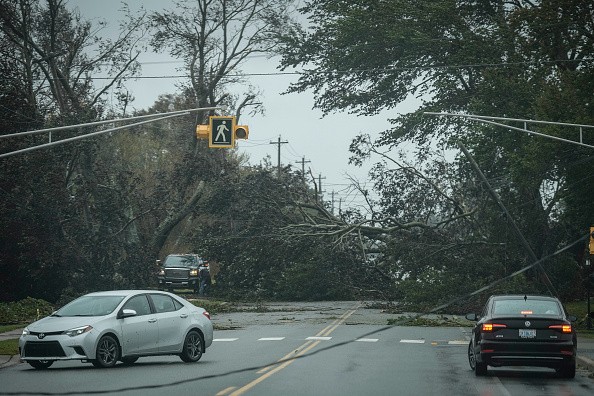The aftermath of Fiona caused damage to communities and power outages in Atlantic Canada.
The Canadian Hurricane Centre raised alerts that Fiona could become a historic and extreme event.
Forecasts said it could be the most intense storm hitting Atlantic Canada because of wind gusts, heavy rains, coastal flooding, and dangerous seas.
Reports said that Fiona formed in the central Atlantic on September 15, becoming a major Hurricane on September 18.
Although Fiona weakened to post-tropical, the landfall in Nova Scotia, between Canso and Guysborough, with 100 mph sustained winds, resulted in storm surges, strong winds, and damage to power lines causing massive power outages.
Moreover, Canadian Prime Minister Justin Trudeau said they started extending assistance to the affected communities, according to CNN.
Aftermath

According to AccuWeather, Fiona caused massive power outages affecting the power supply in affected communities.
- Over 205,000 people in Nova Scotia
- 80, 000 people on Prince Edward Island
- 13,000 in Brunswick
In a press release, Fiona was said to cause elevated water levels affecting Nova Scotia, Cabot Strait, southwestern Newfoundland, and along the coastlines of Prince Edward Island, Gulf coastlines, and Northumberland.
CNN reported that Nova Scotia Premier Tim said on Saturday's news conference that restoring power was their biggest priority.
The report added that over 900 power technicians were deployed to address the issues of power outages.
On the other hand, the government immediately helped by deploying troops to remove debris, including blown trees, from the aftermath of Fiona.
Mayor Mike Savage told CNN that a Halifax apartment complex's room collapsed as Fiona hit the city. The affected people of about 100 were evacuated to a shelter.
According to The Guardian, Port Aux Basques was also damaged.
Before Fiona hit Atlantic Canada, it pounded the Caribbean, leaving five deaths and massive property damage.
The Canadian Hurricane Centre, in a tweet, said that Fiona makes the lowest pressured land falling on record in Canada.
After the disaster
Fiona left massive property damage and especially to power lines.
Reports of houses collapsed and being washed away, making Fiona the most intense post-tropical.
While cities are recovering with the help of local and national governments, it is important to know how to prepare after the disaster.
- Before you return home, make sure it is safe, as confirmed by local authorities.
- Check you and your family members for injuries and seek medical assistance. If you have missing family members, inform the local authorities for search and rescue operations.
- Inform your family that you are safe from the storm.
- Stay updated with the local authorities and forecasts of the storm.
- Avoid flooded areas or roads that are being cleared from down trees or power lines.
- Report to local authorities potential leak of gas or diesel, if any.
- Be wary of a possible collapse or falling debris as you return home.
- Check every window and part of your house for potential damage, and immediately repair it.
- If the electrical wires, sockets, or extensions are wet or damaged, don't touch them and call a professional electrician to check.
Related Article : Forecasts Suggest Fiona Could Become Most Intense Storm on Record to Hit Atlantic Canada
For more similar stories, don't forget to follow Nature World News.
© 2025 NatureWorldNews.com All rights reserved. Do not reproduce without permission.





